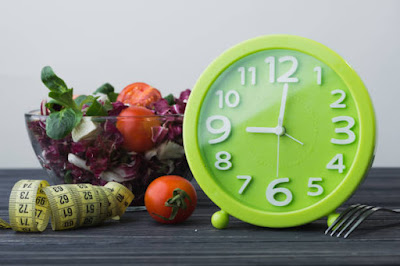Unlocking the Power of Keto: Managing Type 1 Diabetes with a Low-Carb Lifestyle
Starting on a Keto Diet for People with Type 1 Diabetes
The ketogenic diet, or keto diet, has gained popularity for its potential benefits in weight loss, improved mental clarity, and increased energy levels. However, for individuals with type 1 diabetes, adopting a keto diet requires careful consideration and management to ensure stable blood sugar levels. In this blog post, we will explore how to start the keto diet while effectively managing your diabetes, including foods to avoid and suitable alternatives. We will also provide you with a 7-day meal plan to help you get started on your keto journey.
Important Note: Consult with Your Doctor
Before making any significant changes to your diet or lifestyle, especially if you have type 1 diabetes, it is essential to consult with your healthcare provider. They can provide personalized guidance and help you navigate potential challenges and risks associated with the keto diet.
Foods to Avoid
On a keto diet, you need to limit your carbohydrate intake to induce a state of ketosis, where your body burns fat for fuel instead of glucose. However, managing blood sugar levels is crucial for individuals with type 1 diabetes. Here are some foods to avoid:
Carbohydrate-rich foods: This includes bread, pasta, rice, potatoes, and sugary snacks. These foods can significantly impact your blood sugar levels.
High-sugar fruits: Fruits that are high in natural sugars, such as bananas, grapes, pineapples, and mangoes, should be limited or avoided.
Processed foods: Stay away from processed foods containing hidden sugars and unhealthy fats, including sugary beverages, snacks, and desserts.
Starchy vegetables: Reduce consumption of starchy vegetables like corn, peas, and carrots as they contribute to higher carbohydrate intake.
Legumes and grains: Foods like beans, lentils, chickpeas, and grains like wheat, oats, and rice should be avoided due to their carb content.
Keto Food Alternatives
While there are certain foods to avoid, there are also suitable alternatives that can be incorporated into your keto diet:
Non-starchy vegetables: These include leafy greens, broccoli, cauliflower, zucchini, bell peppers, and Brussels sprouts. These vegetables are low in carbs and high in fiber, making them ideal keto-friendly options.
Healthy fats: Incorporate fats like avocados, olive oil, coconut oil, nuts, and seeds. These provide satiety and support ketosis.
Low-sugar fruits: Opt for berries, such as strawberries, blueberries, and raspberries, which are lower in carbohydrates compared to other fruits.
Protein sources: Choose lean proteins like chicken, turkey, fish, eggs, and tofu to meet your protein needs without excessive carbs.
Dairy products: If you tolerate dairy, incorporate full-fat options such as yogurt and cream into your meals, as they are low in carbohydrates.
To read more about Keto diet and type 1 diabetes, check this out: https://amzn.to/3K2lM36
7-Day Keto Meal Plan for Type 1 Diabetes
Here's a 7-day meal plan to help you get started on your keto journey without cheese:
Day 1:
- Breakfast: Scrambled eggs cooked in olive oil with spinach and avocado.
- Lunch: Grilled chicken salad with mixed greens, cucumber, cherry tomatoes, and ranch dressing.
- Snack: Mixed nuts (almonds, walnuts, and pecans).
- Dinner: Baked salmon with roasted asparagus and a side of cauliflower rice.
- Dessert: Sugar-free jello.
Day 2:
- Breakfast: Spinach and mushroom omelet cooked in coconut oil.
- Lunch: Turkey lettuce wraps with avocado, tomato, and mayo.
- Snack: Celery sticks with almond butter.
- Dinner: Grilled steak with roasted Brussels sprouts and a side salad.
- Dessert: Berries with whipped cream (without added sugar).
Day 3:
- Breakfast: Chia seed pudding made with almond milk and topped with sliced almonds and raspberries.
- Lunch: Baked chicken thighs with broccoli and a side salad with olive oil dressing.
- Snack: Hard-boiled eggs.
- Dinner: Cauliflower crust pizza topped with tomato sauce, vegetables, and grilled chicken.
- Dessert: Dark chocolate squares (85% cocoa or higher).
Day 4:
- Breakfast: Keto smoothie made with coconut milk, spinach, almond butter, and a low-carb protein powder
- Lunch: Tuna salad made with lettuce wraps, mayo, celery, and diced pickles.
- Snack: Zucchini chips (sliced zucchini baked with olive oil and spices).
- Dinner: Pork chops with roasted green beans and a side of mashed cauliflower.
- Dessert: Sugar-free popsicle.
Day 5:
- Breakfast: Mushroom and spinach frittata made with eggs and coconut milk.
- Lunch: Grilled shrimp salad with mixed greens, tomatoes, avocado, and lemon vinaigrette.
- Snack: Cucumber slices with cream cheese.
- Dinner: Baked chicken drumsticks with sautéed kale and a side of cauliflower mac and cheese.
- Dessert: Coconut milk chia pudding with chopped almonds.
Day 6:
- Breakfast: Avocado and bacon wrapped eggs cooked in coconut oil.
- Lunch: Zucchini noodles with chicken and pesto sauce.
- Snack: Olives.
- Dinner: Beef stir-fry with mixed vegetables (broccoli, bell peppers, mushrooms) cooked in sesame oil.
- Dessert: Keto-friendly mug cake made with almond flour and topped with sugar-free whipped cream.
Day 7:
- Breakfast: Smoked salmon with cream cheese rolled in lettuce wraps.
- Lunch: Egg salad with mayonnaise, celery, and lettuce wraps.
- Snack: Pork rinds.
- Dinner: Grilled salmon with steamed asparagus and a side of roasted radishes.
- Dessert: Sugar-free dark chocolate mousse.
Starting a keto diet with type 1 diabetes may present additional challenges, but with careful planning and monitoring, it is possible to find a balance that works for you. Good luck on your keto journey and take care of your diabetes!
Thank you for reading my blog! Some of the links in this article may be affiliate links, which means I may earn a small commission if you make a purchase. Your support helps me continue providing valuable content. Rest assured, I only recommend products or services that I genuinely believe in. If you have any questions, feel free to reach out. Happy reading!



Comments
Post a Comment